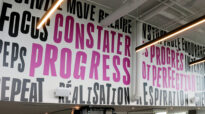Signage & wayfinding by Steer for Toronto's parks and trails
Written by Juan Rioseco RGD
By Juan Rioseco RGD, Associate Director, Steer
Submitted as a part of an RGD Certification Application.
Context
Covering 13% of Toronto's land area ranging from urban plazas to forested ravines, are 1,600 parks. A 600 km trail network through these parklands serves recreational users and also acts as a key part of the city’s active transportation network.
Previously, park and trail signs were developed on an as-needed basis resulting in cluttered environments and inconsistent, poorly maintained signage. The growing pressure on Toronto’s parkland assets, driven by increases in population and a renewed interest in the environment and healthy lifestyles, the City of Toronto, Parks, Forestry and Recreation Division commissioned Steer to develop a wayfinding and singage strategy.
Methodology
Phase I of the project, completed in 2014, established the system’s core wayfinding principles, user needs and recommended product design direction—informed by extensive consultation and community outreach including pop-up events in parks.
This framework provided the necessary tools for phase II (2015/16), consisting of detailed design development and pilot implementation in Lower Don Trail and Riverdale Park to test the suitability of the proposed solution in context. In parallel, a digital accessibility strategy was developed to assess the potential implementation of location-based information services suitable for those experiencing visual and mobility challenges.
Design process
The design strategy is structured around aligning the diverse characteristics of parks and trails environments with users’ behaviours. While parks are recreational spaces to linger and socialize, trails are linear routes that support an active lifestyle. Recognizing these differences, the system was designed as two families:
- green signs inform users about parks and their facilities, support navigation and promote exploration.
- Orange signs support walking and cycling in, along and out of multi-use trails.
Additionally, historical and ecological interpretation content is incorporated to either sign family or as standalone products. The two product sub-families share many product design components and were developed in tandem, tested progressively through concept, schematic and design intent and vetted in consultation with external stakeholders and internal city groups.
We provided mock-ups, 3D renders and visualizations to help situate the sign in different parkland contexts across the seasons, facilitating the final sign-off to progress with a pilot implementation. Following the implementation of the pilot, additional public engagement and fabrication lessons-learned, shaped a final value engineering exercise to prepare the products for city-wide rollout.
Solution
As a simple rational solution to facilitate production, installation and maintenance, we developed a modular suite of anodized aluminum frames with interchangeable graphic panels. These can be combined to create 17 sign types, to suit the wide variety of conditions, sizes and functions of parks and trails across Toronto. Each sign type follows a consistent information hierarchy and graphic design to create a familiar look and a predictable wayfinding experience.
Illustrated maps with content and scale variations to suit the needs of parks and trails users are at the core of the wayfinding strategy. The maps share the same base as the city pedestrian wayfinding system (TO360), supporting friction-free transitions between parkland and urban environments by using a shared iconography and a consistent graphic language.
Result
Steer completed an extensive standard manual and guideline document for the citywide roll-out, comprising five volumes describing strategy, placement, product details and graphic specification. The guidelines provide tools for selecting, locating and preparing final artwork graphics for each sign, as well as a governance structure to deliver a decades-long implementation expected to include thousands of signs.
As a final step before the city-wide rollout begins, we developed a detailed implementation strategy that aligns with available funding streams and the City's investment priorities.



Tags
Related Articles




Elana Rudick RGD












